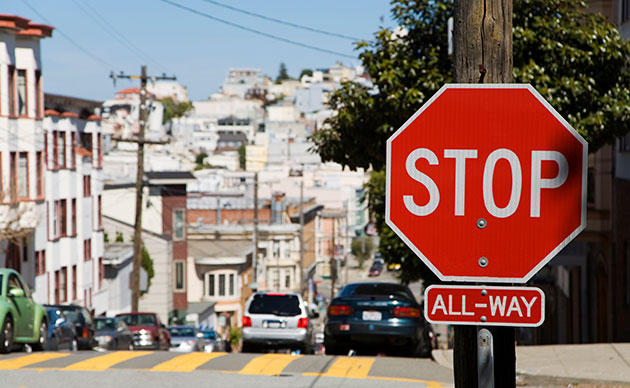San Francisco is known for its steep terrain, but taking the city’s streets by force may prove too much of an uphill battle for Uber.
In its race to be the authority on autonomous vehicles, the rideshare giant has been aggressively expanding its operations across the country—including a recent trial run in Pittsburgh where random Uber customers were treated to rides in self-driving car prototypes.
But when the app company launched a similar test in San Francisco earlier this week, it faced a stiff rebuke from city and state officials alike.
The problem: Uber doesn’t have the appropriate permit to operate self-driving vehicles in California. Uber officials say it doesn’t need a permit to run this type of experiment on the streets of San Francisco.
What’s in a Word?
The loophole the company is hoping to pass through deals with the mechanics of the cars themselves. Uber insists the vehicles don’t meet the state’s definition of “autonomous,” since they require a driver to be present at all times to monitor the ride.
But the rules laid out by the California Department of Motor Vehicles (DMV) classify an “autonomous vehicle” simply as one equipped with autonomous technology, which the state agency defines as any technology with “the capability to drive a vehicle without the active physical control or monitoring by a human operator.”
In its Pittsburgh experiment, Uber’s fleet of specially modified Volvo XC90s were equipped with a wide assortment of cameras, lasers, sensors, radar, GPS, and other digital mechanics allowing the cars to get around. But, whether that battery of programs constitute “autonomous technology” in California, and whether that technology needs to be engaged in order to constitute a self-driving ride, remains unclear.
Still, Uber has made a hard push into that grey area, claiming in a blog post that “[t]he rules apply to cars that can drive without someone controlling or monitoring them. For us, it’s still early days and our cars are not yet ready to drive without a person monitoring them."
For its part, the California DMV was equally as unambiguous in its response, saying in a statement, "We have a permitting process in place to ensure public safety as this technology is being tested. Twenty manufacturers have already obtained permits to test hundreds of cards on California roads. Uber shall do the same."
San Francisco Mayor Ed Lee also took a hard line against his hometown company, imploring the rideshare giant to not only follow the requirements of the state, but to think about the public safety aspect of their actions.
“Our primary concern is keeping our streets safe for pedestrians, cyclists and other motorists,” Ellen Canale, a spokeswoman for the mayor’s office, told the San Francisco Examiner. “The mayor demands Uber to stop the unpermitted and unlawful testing of autonomous vehicles on the streets of San Francisco until they obtain the appropriate permitting from the DMV.”
The pushback from local officials marks the second time Uber has been in hot water with the city lately, as the San Francisco Municipal Transportation Agency also recently declared rideshares as a major factor in the Bay Area’s increasing traffic problem.
Uncertain Fallout
Uber has turned a deaf ear to both San Francisco and California officials, deciding instead to continue pursuing its experiment in the city.
While the immediate consequences of its actions are unknown, the California DMV has threatened legal action against the app company should Uber’s refusal to halt the project continue. In a similar legal situation, the state would be within its rights to seek injunctive relief against the violator, as bucking the regulations of the DMV would be considered a misdemeanor.
In the meantime, Uber’s unpermitted operations would allow the company to skirt other rules tethered to the official permission to test in the state, including the need to report any accidents the cars are involved in and to log how frequently the vehicles’ self-driving technology must be disengaged.
Such regulations only serve to slow the tide of progress, restricting the company’s capabilities and stymieing the self-driving revolution as a whole, Uber says. The company also hinted at the link between self-driving technology and the potential to save lives that has so often been touted by the federal government.
“Most states see the potential benefits, especially when it comes to road safety,” Uber said in its blog post on the subject. “Our hope is that California, our home state and a leader in much of the world’s dynamism, will take a similar view.”
